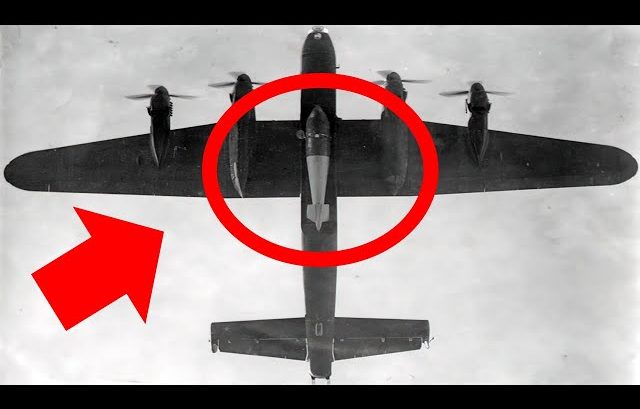Each time the United Kingdom’s Bomber Command was given challenging missions, the Avro Lancaster heavy bomber was always their go-to plane. Equipped with four Rolls-Royce engines with an impressive top speed of 187 miles per hour, it has an excellent lifting capacity and an unobstructed bomb bay.
Its standard load of up to 18,000 pounds of explosives also gave the Brits an offensive striking power to penetrate German defenses in the European theater.
One of a Kind
The Avro Lancaster is considered Britain’s most successful heavy bomber of World War II. It’s powered by four Rolls-Royce 140-horsepower Merlin engines. A mid-wing design complete with a twin tail, the jet had a wingspan of 102 feet and 69 feet long. It could also carry a fourteen-thousand-pound bomb load to a range of 1,660 miles at 200 miles per hour.
The Lancaster’s spacious bomb bays generally carried a mixed load of high explosive bombs like one cylindrical 4,000-pound high blast cookie or up to three two thousand pound explosives but the balance of the bomb load consisted of small incendiaries.
Stark Differences
Unlike the Boeing B-17 Flying Fortress, its American counterpart with a whopping thirteen 50-caliber machine guns, the Avro Lancaster only had ten M1919 Browning machine guns with a thousand rounds each that’s enough for two minutes of regular firing.
Moreover, the heavy bomber was operated by a crew of seven instead of ten like the B-17.
Upkeep
industrialized Roar Valley especially its dams, provided hydroelectric power and water for steel making and drinking water and a canal transportation system. According to intelligence calculations, releasing bombs on top of these zones is feasible, but required a degree of accuracy.
A one-off attack might succeed but the RAF lacked a suitable weapon. The answer to this issue is engineer Barnes Wallace’s bouncing bomb, known by its code name, ‘Upkeep.’ Wallace built a 9,000-pound cylindrical mine to bounce across the water’s surface and into it. The Upkeep weapon would then sink and detonate at a depth of 3030 feet thanks to a hydrostatic fuse.
The Dambuster’s Raid
On the night of May 1943, aircrews were finally briefed on the details of the upcoming raid. After knowing which targets they were supposed to strike 19 Lancasters from the 617th Squadron lifted off in three waves, one of nine and two of five.
The so-called dam busters managed to breach the Mona and Ayler dams and the Sorpa was heavily damaged, flooding the Roar Valley, and putting the local industry out of action. They were able to do this without modern computer equipment, and only using maps, compasses, pencils, and rulers.
Other Roles
Apart from its main bombing tasks, the extremely versatile Avro Lancaster was also used for maritime management and photo reconnaissance missions.
Moreover, 31 Avro Lancasters took part in the sinking of the German battleship Tirpitz, where they dropped twelve thousand pound tall boy bombs on top of the vessel. Some Avro Lancasters were also equipped with H2S ground mapping radar from 1943 onwards. The technology then evolved and was equipped with enhanced radar as well as receivers for radio guidance systems.
It also played a key role in the preparations for Operation Overload on June 1944, conducting accurate attacks on rail yards, bridges, and other transportation targets.



